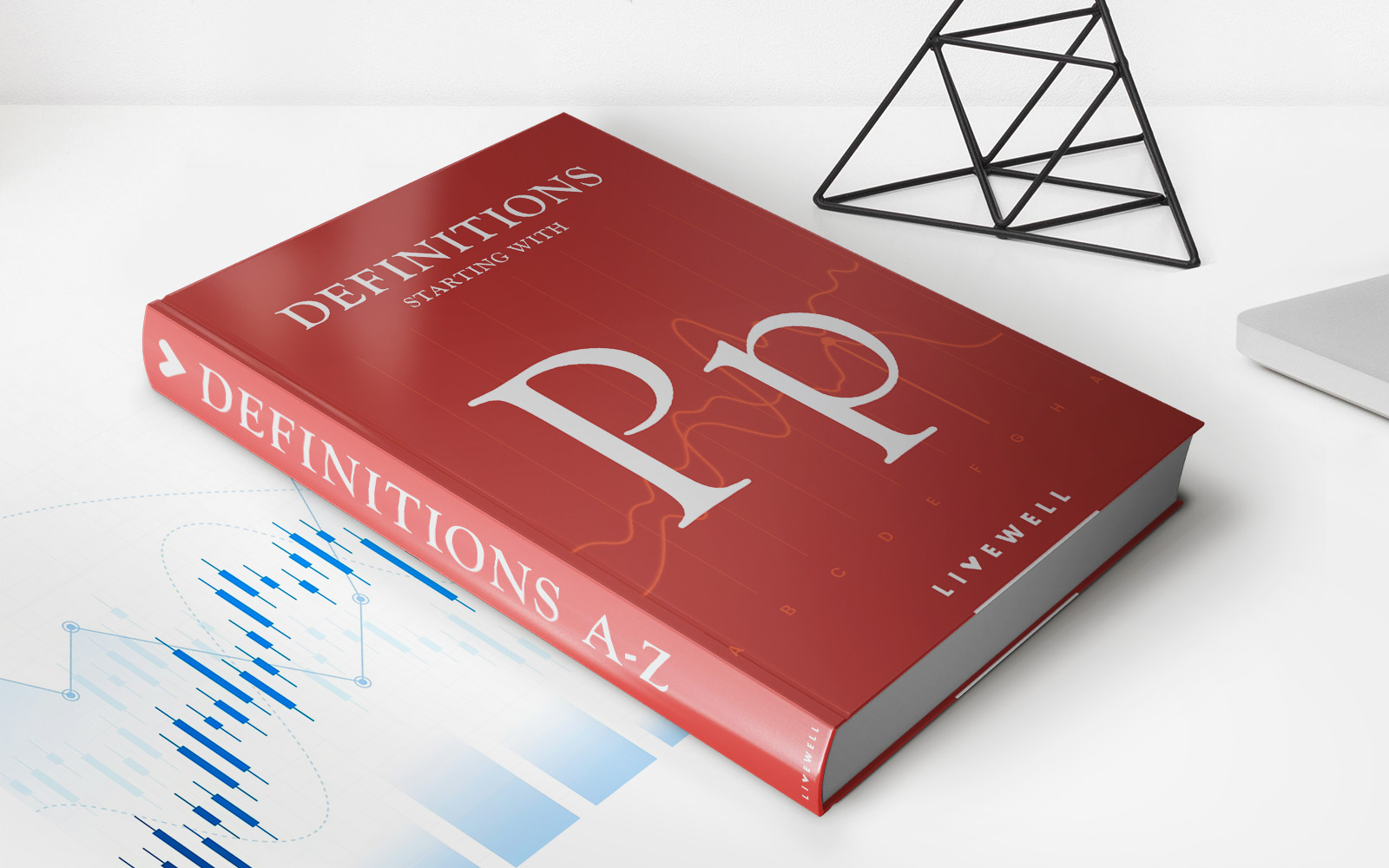Home>Finance>What Is A Minimum Interest Charge On A Credit Card


Finance
What Is A Minimum Interest Charge On A Credit Card
Published: November 7, 2023
Learn what a minimum interest charge is on a credit card and how it affects your finances. Understand how this fee can impact your monthly payments and overall credit card balance.
(Many of the links in this article redirect to a specific reviewed product. Your purchase of these products through affiliate links helps to generate commission for LiveWell, at no extra cost. Learn more)
Table of Contents
Introduction
A minimum interest charge is a fee imposed by credit card issuers when the cardholder does not pay off their full balance by the due date. It is essentially the minimum amount of interest that a credit card holder must pay each month, even if they have a relatively small outstanding balance.
In the world of credit cards, it is important for consumers to understand the implications of minimum interest charges. Failing to pay attention to this detail can often lead to costly consequences, as these charges can add up over time and increase the overall cost of using a credit card.
Understanding how minimum interest charges work and finding ways to avoid them can help individuals effectively manage their credit card debt and minimize unnecessary expenses.
In this article, we will delve into the concept of minimum interest charges, how they are calculated, common reasons for their imposition, and discuss strategies to avoid them whenever possible. By gaining a clearer understanding of this often-overlooked aspect of credit card usage, individuals can take control of their financial health and make informed decisions when it comes to managing their credit card debt.
Definition of a Minimum Interest Charge
A minimum interest charge, also known as a minimum finance charge, is a fee imposed by credit card issuers when the cardholder carries a balance from one month to the next without paying off the full amount owed. This charge ensures that credit card companies collect a minimum amount of interest on outstanding balances, regardless of the size of the balance.
When a cardholder makes only the minimum payment or a partial payment towards their credit card balance, the remaining balance accrues interest. The minimum interest charge is then applied to guarantee that the cardholder pays at least a set amount of interest each month, regardless of the outstanding balance.
The specific amount and calculation method for minimum interest charges can vary between credit card issuers. It is usually based on a percentage of the card’s APR (Annual Percentage Rate) or a fixed dollar amount. This charge is typically added to the cardholder’s next statement, along with any accrued interest on the remaining balance.
It’s important to note that the minimum interest charge is separate from other fees, such as late payment fees or annual fees. It is a specific charge related to the interest accrued on the outstanding balance, ensuring that credit card companies generate revenue even if the cardholder pays only the minimum amount required.
Now that we understand the basic definition of a minimum interest charge, let’s explore how these charges work and how they are calculated. This will give us a better understanding of why they are implemented and how they can affect cardholders’ finances.
How Minimum Interest Charges Work
Minimum interest charges are designed to ensure that credit card companies earn a minimum amount of interest from cardholders who carry a balance from one billing cycle to the next. When a cardholder pays only the minimum payment or a partial payment, the remaining balance accrues interest. The minimum interest charge is then applied to guarantee that a certain amount of interest is paid each month.
Let’s understand the working of minimum interest charges with an example. Suppose you have a credit card with an outstanding balance of $1,000 and an APR of 18%. If the minimum payment is set at 2% of the balance or $20, whichever is higher, and the minimum interest charge is $10, here’s how it would work:
- You make a payment of $50, which is higher than the minimum payment of $20.
- The remaining balance is $950 ($1,000 – $50).
- The interest rate is divided by 12 to calculate the monthly interest rate: 18% / 12 = 1.5%.
- The minimum interest charge is applied, which is $10.
- Your next statement will show a new balance of $960 ($950 + $10).
In this example, even though you made a payment of $50, the minimum interest charge of $10 is added to your balance. This means that your outstanding balance decreased by only $40 ($50 – $10). If you continue to make only minimum payments, it would take longer to pay off your balance and result in more interest charges over time.
It’s important to note that minimum interest charges can vary depending on the credit card issuer. Some charge a fixed dollar amount, while others calculate it as a percentage of the interest owed or a flat fee.
Now that we understand the mechanics of minimum interest charges, let’s move on to the calculation process to gain further insight into how these charges are determined.
Calculation of Minimum Interest Charge
The calculation of the minimum interest charge can vary depending on the credit card issuer’s specific policies. It is typically based on a percentage of the card’s Annual Percentage Rate (APR) or a fixed dollar amount. Understanding how this calculation is done can give cardholders a clearer picture of the charges they may incur.
Here are a few common methods used for calculating minimum interest charges:
- Percentage of APR: Some credit card issuers calculate the minimum interest charge as a fixed percentage of the card’s APR. For example, if the APR is 18% and the minimum interest charge is set at 1% of the APR, the minimum interest charge would be 0.18% of the outstanding balance.
- Fixed Dollar Amount: Instead of calculating the minimum interest charge based on a percentage, some credit card companies set a fixed dollar amount. This means that regardless of the outstanding balance, the minimum interest charge remains the same. For example, if the minimum interest charge is set at $10, cardholders would pay that amount every month, regardless of their balance.
- Minimum Interest Charge Caps: Some credit card issuers may have caps or limits on the minimum interest charge. This means that even if the calculated interest is below a certain threshold, the minimum interest charge will be set at the capped amount. This is often done to prevent the charge from becoming too insignificant.
It’s important to carefully review the terms and conditions provided by the credit card issuer to understand how they calculate the minimum interest charge. This will enable cardholders to anticipate and plan for the charges they may incur if they carry a balance on their credit cards.
Now that we have explored how minimum interest charges are calculated, let’s move on to understanding the reasons why credit card companies impose these charges.
Reasons for Minimum Interest Charges
Credit card companies impose minimum interest charges for several reasons, all of which ultimately aim to ensure the profitability and sustainability of their business. Here are some key reasons why these charges are implemented:
- Risk Management: By charging a minimum interest fee, credit card issuers mitigate the risk associated with customers who carry balances without paying off the full amount owed. It acts as a safeguard to ensure the card issuer still receives some interest income, even if the outstanding balance is small.
- Profitability: Credit card companies are for-profit businesses, and interest charges are a primary source of revenue. Minimum interest charges help generate a consistent stream of income, even from customers who only make minimum payments and carry balances.
- Cost of Servicing: Maintaining a credit card program comes with expenses, such as customer service, fraud prevention, administrative costs, and more. Minimum interest charges help offset some of these costs, ensuring that the card issuer remains financially viable.
- Encouraging Full Payment: Minimum interest charges serve as a deterrent and incentive for cardholders to pay off their full balance. By imposing these charges, credit card companies encourage responsible borrowing habits and discourage customers from carrying balances indefinitely, which could lead to larger interest charges over time.
It’s important for cardholders to understand that credit card companies are in the business of making money, and minimum interest charges are one way they achieve this. While it may seem burdensome to some individuals, responsible credit card usage, such as paying off the full balance each month, can help avoid these charges entirely.
Next, we will explore some strategies to help cardholders avoid minimum interest charges and manage their credit card debt effectively.
Ways to Avoid Minimum Interest Charges
While minimum interest charges are a common feature of credit cards, there are strategies that cardholders can employ to help minimize or even avoid these charges altogether. By following these tips, individuals can effectively manage their credit card debt and keep unnecessary expenses at bay:
- Pay the Full Balance: The most effective way to avoid minimum interest charges is to pay off the full balance on your credit card each month. By doing so, you eliminate the need for accruing any interest on your outstanding balance.
- Make Timely Payments: Ensure that you make your credit card payments on time to avoid late payment fees. Late payments can not only result in fees, but they can also trigger additional interest charges and negatively impact your credit score.
- Understand the Billing Cycle: Familiarize yourself with the billing cycle and due dates for your credit card. By knowing when your statement is generated and the due date for payment, you can plan and budget accordingly to pay off the full balance on time.
- Create a Budget: Develop a monthly budget that allows you to allocate funds for your credit card payments. By including your credit card debt in your budget and prioritizing timely payments, you can avoid carrying balances and incurring minimum interest charges.
- Consider a Balance Transfer: If you are struggling with high-interest credit card debt, you may want to explore the option of a balance transfer to a card with a lower interest rate. This can potentially help you save on interest charges and pay off your debt faster.
- Pay More Than the Minimum: Whenever possible, try to pay more than the minimum payment required. By doing so, you can reduce the outstanding balance faster and minimize the interest charges that accrue over time.
- Review Your Credit Card Terms: Read and understand the terms and conditions of your credit card regarding interest charges and minimum payments. Being aware of the specific policies will help you make informed decisions about your credit card usage and payment strategy.
By implementing these strategies, you can take control of your credit card debt and avoid unnecessary charges. Remember that responsible credit card usage and timely payments are key to maintaining your financial well-being.
Now, let’s move on to exploring the pros and cons of minimum interest charges to gain a comprehensive understanding of their impact.
Pros and Cons of Minimum Interest Charges
As with any financial concept, minimum interest charges come with both advantages and disadvantages. It is important to weigh these pros and cons to make informed decisions about credit card usage. Let’s explore the benefits and drawbacks of minimum interest charges:
Pros:
- Revenue Generation: Minimum interest charges ensure that credit card issuers generate a consistent stream of income, allowing them to provide various benefits and services to cardholders.
- Risk Mitigation: These charges help mitigate risk for credit card companies by ensuring some level of interest income, even from customers who only make minimum payments.
- Promotes Responsible Borrowing: Minimum interest charges act as a deterrent for carrying balances indefinitely, encouraging responsible borrowing habits and timely repayment of credit card debt.
- Offsetting Costs: Minimum interest charges help offset the costs of maintaining credit card programs, including customer service, fraud prevention, and administrative expenses.
Cons:
- Costly for Cardholders: Minimum interest charges can add up over time, resulting in higher overall interest costs for cardholders who do not pay off their balances in full each month.
- Discourages Full Payments: Some cardholders may view the minimum payment requirement as a signal that they only need to make the minimum payment. This could lead to carrying balances and incurring more interest charges.
- Complex Calculation Methods: The varying methods used to calculate minimum interest charges can be confusing for cardholders, making it difficult to anticipate and budget for these charges accurately.
- Potential Debt Traps: Minimum interest charges, coupled with high-interest rates, can trap individuals in a cycle of debt if they consistently make only minimum payments, leading to long-term financial stress.
It’s important for cardholders to understand the pros and cons of minimum interest charges and make informed decisions about their credit card usage. Utilizing strategies to avoid these charges and paying off credit card balances in full whenever possible can minimize the negative impact.
Now, let’s summarize the main points discussed in this article.
Conclusion
Minimum interest charges are a common aspect of credit card usage that cardholders need to be aware of to effectively manage their finances. These charges ensure that credit card companies earn a minimum amount of interest from customers who carry balances without paying off the full amount owed each month.
In this article, we discussed the definition of a minimum interest charge, how it works, and the methods used to calculate these charges. We also explored the reasons why credit card companies impose minimum interest charges, such as risk management, profitability, and offsetting costs.
To avoid minimum interest charges, it is crucial to pay off the full balance each month, make timely payments, and understand the billing cycle and terms of your credit card. Creating a budget, considering balance transfers, and paying more than the minimum amount required can also help reduce the impact of these charges.
While minimum interest charges play a role in generating revenue for credit card companies, they can also be costly for cardholders who do not manage their credit card debt responsibly. Understanding the pros and cons of these charges can assist individuals in making informed decisions about their credit card usage.
In conclusion, by staying informed, adhering to responsible borrowing practices, and proactively managing credit card debt, individuals can minimize the impact of minimum interest charges and maintain a healthy financial outlook.














